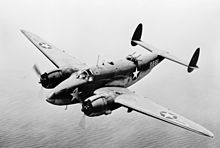- MV Dunedin Star
-
Career (Great Britain) Namesake: Dunedin Operator: Blue Star Line Builder: Cammell Laird, Birkenhead Launched: 29 October 1935 Christened: MV Dunedin Star Commissioned: February 1936 Fate: Grounded, 29 November 1942, Skeleton Coast General characteristics Class and type: Refrigerated Cargo Liner Displacement: 13000[1] Length: 530 ft (162 m) Beam: 70.4 ft (21 m) Draught: 32.3 ft (10 m) Propulsion: Two 9-Cylinder 2 S.C.S.A. oil engines by Sulzer Bros, Winterthur, driving twin propellers MV Dunedin Star I was a Blue Star Line ship that ran aground on the Skeleton Coast of Namibia on November 29, 1942, while carrying passengers and cargo from Liverpool to Saldanha Bay, South Africa, Aden and Egypt. She was carrying munitions and supplies as part of the Allies' World War II effort, but had 21 fare-paying passengers escaping The Blitz as well.[1]
Contents
Shipwreck
Dunedin Star was a 530 feet (160 m) long refrigerated cargo liner built by the Cammell Laird company of Birkenhead, England, and was launched in 1935. Three days short of arriving in Saldanha Bay, she struck an underwater obstacle, presumed by the court of inquiry to be the poorly charted Clan Alpine Shoal. The crew managed to send an SOS distress call, giving their approximate position as18°08′S 11°33′E / 18.13°S 11.55°ECoordinates: 18°08′S 11°33′E / 18.13°S 11.55°E, that was intercepted onshore at Walvis Bay.
The ship began taking on water rapidly, and its pumps were unable to cope. In an effort to preserve the lives of the passengers and the valuable cargo, Captain Lee elected to ground the ship on the beach, 80 km south of the Cunene River mouth. The ship grounded 500 metres (1,600 ft) offshore, forcing the evacuation in heavy seas via its motorboat. Forty-two passengers and crew were evacuated before the motorboat failed after three trips, leaving 43 or more souls on board the stranded ship.[2] The captain contacted Walvis Bay again, requesting further assistance.
A rescue tug, the Sir Charles Elliott, dispatched after the SOS was received, reached the grounded ship and helped to transfer some of the people still on board the Dunedin Star. On her way back to Walvis Bay she ran aground near Rocky Point. Two of her crew members lost their lives while trying to swim ashore.[2]
Three days later, four ships arrived on the scene, and rescued the remaining people on the ship; however none of the rescue ships was able to reach the shore due to adverse sea conditions. An aircraft was therefore summoned to supply food and water to the castaways.
A Ventura bomber of the South African Air Force flew from Cape Town to drop supplies on the beach for the survivors, then later, in an attempt to rescue women and children, landed on a nearby salt pan. However the landing gear broke through the crusted surface of the salt, damaging the aircraft and getting the aircraft stuck in the sands. After performing on site repairs and a four day digging effort, the aircraft finally took off again, only to crash into the sea approximately 43 minutes after taking off. The crew not only survived the crash, but managed to swim ashore and later find their way to the overland rescue convoy as well. The airmen, together with the original survivors, eventually reached Windhoek on Christmas Eve, twenty-six days after the original disaster[3].
Her grounding became famous because of the perilous conditions facing the survivors after they landed on the desolate Namibian shore. The coastline is completely inhospitable, being guarded on one side by the fierce surf and on the other by the almost completely barren Namib Desert that runs almost the entire length of the coast and varies in width from 50–160 km.
Some of the cargo was salvaged in 1951[4], while some is still visible to this day on the beach.
See also
References
- ^ a b Jeff Dawson (2005). Dead Reckoning: The Dunedin Star Disaster. Weidenfeld & Nicolson. ISBN 0753820447. http://books.google.com/books?id=naMFHgAACAAJ. Retrieved 2008-03-31.
- ^ a b Amy Schoeman (2003). Skeleton Coast. Struik. ISBN 1868728919. http://books.google.com/books?id=W75aoZLDG9YC&q=Dunedin+Star#v=onepage&q=&f=false. Retrieved 2008-03-31.
- ^ Ray Mears Extreme Survival - Series 3 [2003], TV documentary including interviews with survivors, including the pilot Captain Immins Naude
- ^ "Blue Star's M.V. "Dunedin Star" 1". bluestarline.org. http://www.bluestarline.org/dunedin1.html. Retrieved 2008-03-31.
Further reading
- Schoeman, Amy (1998). "Naturally Intimate". Travel Africa Magazine via The Africa Guide. http://www.africaguide.com/features/trvafmag/025.htm.
- John H. Marsh; Lyman Anson (1958). Skeleton Coast. Hodder & Stoughton. http://rapidttp.co.za/skeleton. (1st ed. by Marsh alone, London: Hodder & Stoughton, 1944)
- Ray Mears Extreme Survival - Series 3 [2003], TV documentary including interviews with survivors and aircraft pilot Captain Immins Naudir. Amazon
External links
Categories:- World War II shipwrecks in the Atlantic Ocean
- Mersey-built ships
- Shipwrecks of Namibia
- Maritime incidents in 1942
- 1942 in Namibia
- 1935 ships
- Cargo liners
Wikimedia Foundation. 2010.

